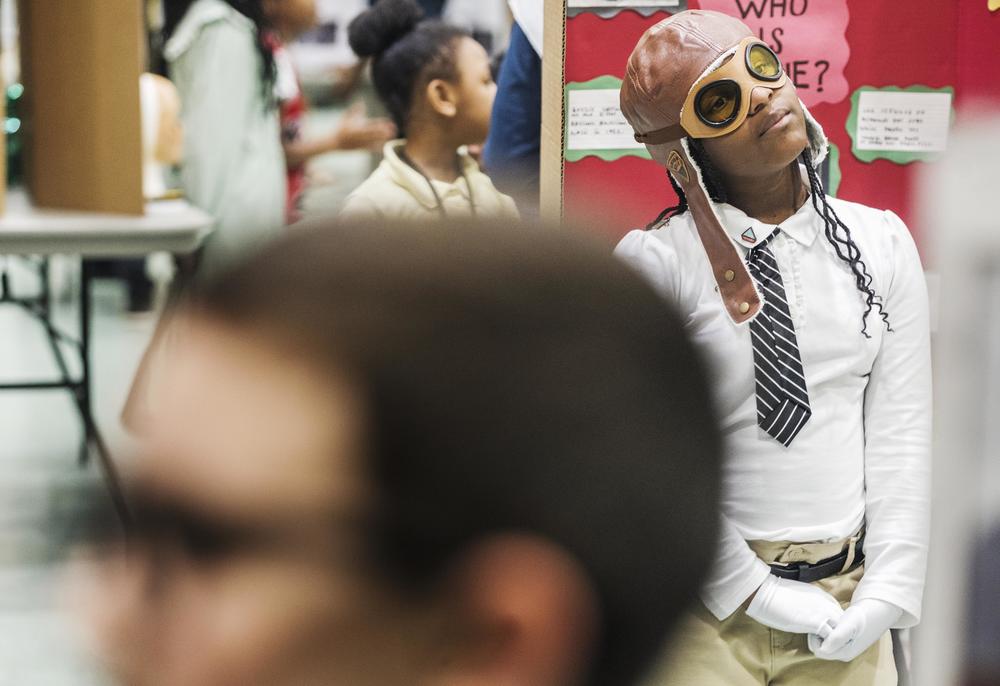
Caption
Student Jaleigh Rhodes in between recitations of the life story of Bessie Coleman, the first Black woman in the nation to be a licensed pilot.
Credit: Grant Blankenship/GPB News
|Updated: February 18, 2024 8:58 AM
How do you make history come alive for kids?
For fourth grade students at Macon’s Vineville Academy for the Arts, the answer was to let them live history. Or at least to let them act it out.
That was the idea behind the Black History Month Living Wax Museum at the school earlier this week.
Students in costume stood in front of trifold boards full of life facts in the school auditorium.
There was more than one Muhammad Ali — plus LeBron James, a Kobe Bryant and a Michael Jordan. But sports figures were hardly the only heroes represented.
Primly dressed in a knit plaid suit, wig and glasses, Harmony Johnson got in character.
“I am Dr. Shirley Ann Jackson!” she intoned after another student (a fifth grader!) made it clear she wanted to hear her story.
Johnson went on.
“I am one of the first African American women to have a Ph.D. in physics,” she said. “I am the first African American woman to earn her Ph.D. in physics from the Massachusetts Institute of Technology.”
And, as it turns out, Jackson was also awarded the National Medal of Science by none other than President Barack Obama.
Elsewhere, in a leather aviators’ helmet and goggles, young Jaleigh Rhodes was Bessie Coleman.
“I was an American pilot in 1921; I became the first African American woman to hold a pilot's license,” she told anyone who stopped long enough to listen.

Student Jaleigh Rhodes in between recitations of the life story of Bessie Coleman, the first Black woman in the nation to be a licensed pilot.
Tyler Burns teaches fourth grade at Vineville Academy and helped make the living Black history museum happen. She said she was learning with the kids.
“Someone just told me that LeBron James was a billionaire," she said. "I had no idea!"
“But just to see Ruby Bridges coming in here, who's paved the way for all of these children to be able to integrate into school, I think that's pretty cool.” Burns said.
There were actually two young people portraying Ruby Bridges, who integrated a New Orleans elementary school in 1960 at the age of 6.
It was the second year for the event meant, in part, to really maximize the impact of the one month in the year devoted explicitly to Black history.
“Because at the end of the day Black history is American history,” Burns said.
And that, Burns said, should be celebrated.